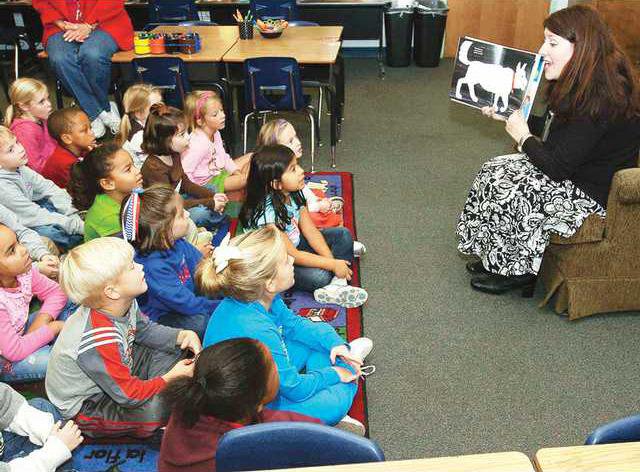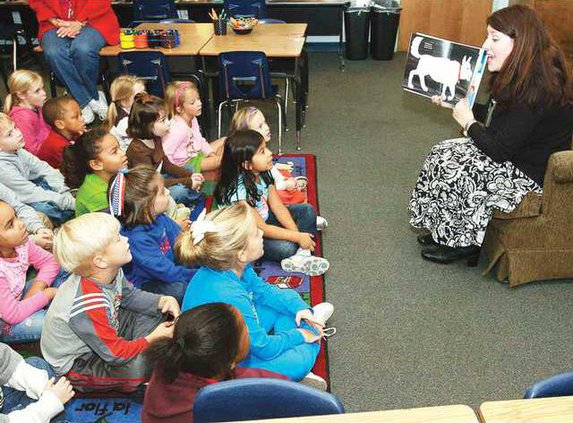JEFFERSON — Students in Lucy Bush’s classes tend to say things differently than you would expect.
Instead of saying bear, they say "oso."
And instead of saying "we can" they say "podemos."
If you think Bush teaches a Spanish class, you’d be correct. But if you think that her students are high school students, you’d be wrong.
For the past several years, students at Jefferson Elementary School, which houses pre-kindergarten through second grades, have been spending 45 minutes each week in a Spanish class.
"The Spanish class is mandatory for all kindergarten through second-grade students," Bush said. "We spend a great deal of time working on vocabulary and pronunciation."
One may think that it would be difficult to teach such young students a foreign language, but Bush said the opposite is true.
"Research shows that early exposure to a foreign language greatly enhances their ability to learn that language as well as improve their skills — reading, writing and processing — in their native language," she said. "Early childhood foreign language study also enhances the students’ cognitive development, which translates to success in other academic areas."
Instead of the students reading from books and trying to translate phrases, Bush uses games, songs, and arts and crafts to help the students pick up the foreign language.
When Bush informed the students that she was about to turn on some "musica" and one student didn’t understand the phrase, another student quickly piped up with a response "Musica is music!" before Bush could respond.
On Friday, one of the kindergarten classes read through the Spanish version of "Brown Bear, Brown Bear," or "Oso Pardo, Oso Pardo," as a group.
With that one story the students were able to practice colors, animal names, vocabulary and pronunciation. Such multi-tasking lessons are key elements to the Spanish class.
For instance, the students also sang the Spanish version of "Head, shoulders, knees and toes" where they not only practiced saying the words but also reinforced what the word was.
Lessons that make learning easy and interesting are powerful tools in teaching young students anything, especially a foreign language, Bush says.
The learning doesn’t end when students leave school. The educational process can continue at home, even in houses where the students’ parents don’t speak a word of Spanish.
"I encourage my kids to watch ‘Dora the Explorer,’ ‘Go Diego Go,’ and ‘Maya and Miguel’ at home," she says. "It’s 90 percent in English, but it also offers some Spanish, so it helps them pick up on the new language, too."

